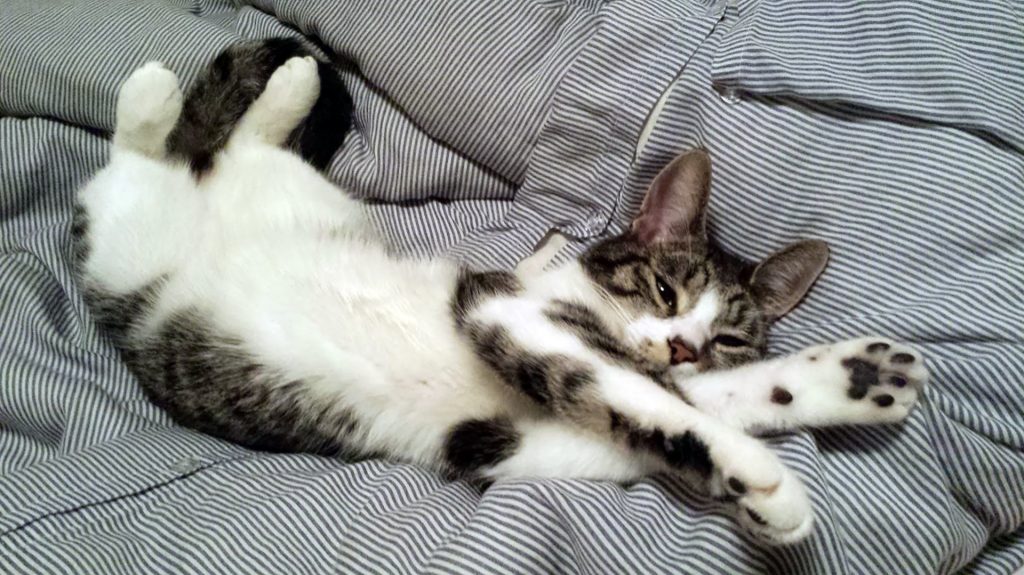 Ah, the comfortable cat! Most people agree that cats are experts at being comfortable and getting the best out of life, with the assistance of their human friends – but how did this come about? Geneticists and historians are continuing to study how cats and people came to live together and how cats came to organise themselves into such a good deal in their relationship with humans. Cats are often allowed liberties that few other animals, even domestic animals, can get away with – they are fed and usually pampered with comfortable beds (including human furniture), are kept warm, cuddled on demand; and, very often, are not even asked to provide anything except affection (on their terms!) in return. Often thought of as solitary animals, cats’ social behaviour is actually a lot more complex and recently further insights have been gained about how cats and humans came to enjoy the relationship that they have today.
Ah, the comfortable cat! Most people agree that cats are experts at being comfortable and getting the best out of life, with the assistance of their human friends – but how did this come about? Geneticists and historians are continuing to study how cats and people came to live together and how cats came to organise themselves into such a good deal in their relationship with humans. Cats are often allowed liberties that few other animals, even domestic animals, can get away with – they are fed and usually pampered with comfortable beds (including human furniture), are kept warm, cuddled on demand; and, very often, are not even asked to provide anything except affection (on their terms!) in return. Often thought of as solitary animals, cats’ social behaviour is actually a lot more complex and recently further insights have been gained about how cats and humans came to enjoy the relationship that they have today.
 Many people know that the Ancient Egyptians came to certain agreements with cats – cats are depicted in some of their art and mummified cats have been found. It is believed that cats may have been worshipped as representatives of the Cat Goddess, Bastet – interestingly enough, a goddess of war! Statues of cats from Ancient Egypt emphasise their regal bearing and tendency towards supercilious expressions. Cats were present in Egyptian art by 1950 B.C. and it was long thought that Egyptians were the first to domesticate the cat. However, in 2004 a cat was found buried with a human on the island of Cyprus in the Mediterranean 9,500 years ago, making it the earliest known cat associated with humans. This date was many thousands of years earlier than Egyptian cats. In 2008 a site in the Nile Valley was found which contained the remains of 6 cats – a male, a female and 4 kittens, which seemed to have been cared for by people about 6,000 years ago.
Many people know that the Ancient Egyptians came to certain agreements with cats – cats are depicted in some of their art and mummified cats have been found. It is believed that cats may have been worshipped as representatives of the Cat Goddess, Bastet – interestingly enough, a goddess of war! Statues of cats from Ancient Egypt emphasise their regal bearing and tendency towards supercilious expressions. Cats were present in Egyptian art by 1950 B.C. and it was long thought that Egyptians were the first to domesticate the cat. However, in 2004 a cat was found buried with a human on the island of Cyprus in the Mediterranean 9,500 years ago, making it the earliest known cat associated with humans. This date was many thousands of years earlier than Egyptian cats. In 2008 a site in the Nile Valley was found which contained the remains of 6 cats – a male, a female and 4 kittens, which seemed to have been cared for by people about 6,000 years ago.
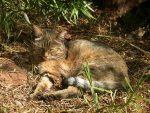
It is now fairly well accepted that cats domesticated people, rather than the other way round! Papers refer to cats as having “self-domesticated”, which sounds in line with cat behaviour. Genetically all modern cats are related to African (also called Near Eastern) wild cats 8,000 years ago. There was an attempt to domesticate leopard cats about 7,500 years ago in China, but none of these animals contributed to the genetic material of the world’s modern cat populations. As humans in the Near East developed agriculture and started to live in settled villages, after 10,000 years ago, cats were attracted to these ready sources of food and more. The steady supply of food from agriculture allowed people to live in permanent villages. Unfortunately, these villages, stocked with food, also attracted other animals, such as rats and mice, not as welcome and potential carriers of disease. The rats and mice were a source of food for the cats who probably arrived in the villages as independent, nocturnal hunters, rather than as deliberately being encouraged by people.
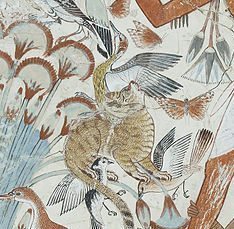
Once cats were living in close proximity to people, trust developed and soon cats were helping humans in the hunt, as is shown in this detail from an Egyptian tomb painting on the right. Over time, cats became pets and part of the family and followed farmers from Turkey across into Europe, as well as being painted sitting under dining tables in Egypt. People started to interfere with the breeding of cats and it is now thought that the Egyptians selected more social, rather than more territorial cats. Contrary to the popular belief that cats are innately solitary, in fact African Wild Cats have complex social behaviour, much of which has been inherited by the domestic cat. African wild cats live in loosely affiliated groups made up mostly of female cats who raise kittens together. There are some males associated with the group, but they tend to visit infrequently and have a larger range, visiting several of the groups of females and kittens. The female cats take turns at nursing, looking after the kittens and hunting. The adult females share food only with their own kittens and not with the other adults. Cats recognise who belongs to their group and who doesn’t and tend to be aggressive to those outside the group. Younger cats are more tolerant of strangers, until they form their own groups. Males are not usually social towards each other, but occasionally tolerate each other in loose ‘brotherhoods’.
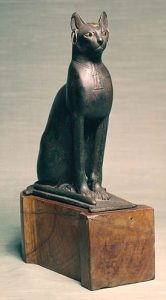 In our homes we form the social group, which may include one or more cats. If there is more than one cat these may subdivide themselves into cliques or factions. Pairs of cats raised together often remain closely bonded and affectionate for life. Other cats (especially males) may isolate themselves from the group and do not want to interact with other cats. Cats that are happy on their own do not need other cats for company. It is more common to find stressed cats in multi-cat households. Cats will tolerate other cats best if they are introduced when young. After 2 years of age cats are less tolerant of newcomers to the group. Humans take the place of parents in their cats’ lives. Cats who grow up with humans retain some psychological traits from kittenhood and never achieve full psychological maturity.
In our homes we form the social group, which may include one or more cats. If there is more than one cat these may subdivide themselves into cliques or factions. Pairs of cats raised together often remain closely bonded and affectionate for life. Other cats (especially males) may isolate themselves from the group and do not want to interact with other cats. Cats that are happy on their own do not need other cats for company. It is more common to find stressed cats in multi-cat households. Cats will tolerate other cats best if they are introduced when young. After 2 years of age cats are less tolerant of newcomers to the group. Humans take the place of parents in their cats’ lives. Cats who grow up with humans retain some psychological traits from kittenhood and never achieve full psychological maturity.
At the time that humans were learning to manipulate the environment to their own advantage by domesticating plants and animals, cats started learning to manipulate us. They have now managed to achieve very comfortable and prosperous lives with humans and have followed humans around the planet. Cats arrived in Australia with the First Fleet, having found a very comfortable niche on sailing ships helping to control vermin. Matthew Flinders‘ cat, Trim, became famous as a result of the book Flinders wrote about him. However, cats have had a devastating effect on the native wildlife of Australia. They kill millions of native animals every year, possibly even millions each night. It is thought that they have been responsible for the extinction of numbers of native mice and small marsupial species. Cats are very efficient and deadly nocturnal hunters. It is recommended that all cats are kept restrained indoors or in runs, especially at night. We must not forget that our cuddly companions are still carnivorous predators.

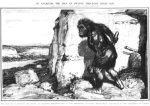


 So how do we know if we have Neanderthals genes? Neanderthal genes have some physical characteristics, but also other attributes that we can’t see. In terms of physical characteristics,
So how do we know if we have Neanderthals genes? Neanderthal genes have some physical characteristics, but also other attributes that we can’t see. In terms of physical characteristics, 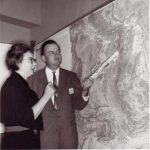

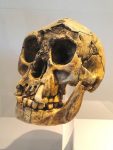

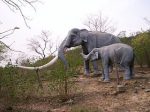

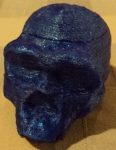
The more I see our teachers and students work with the program, the more convinced I am that we have…
Cheryl Rowe, Principal